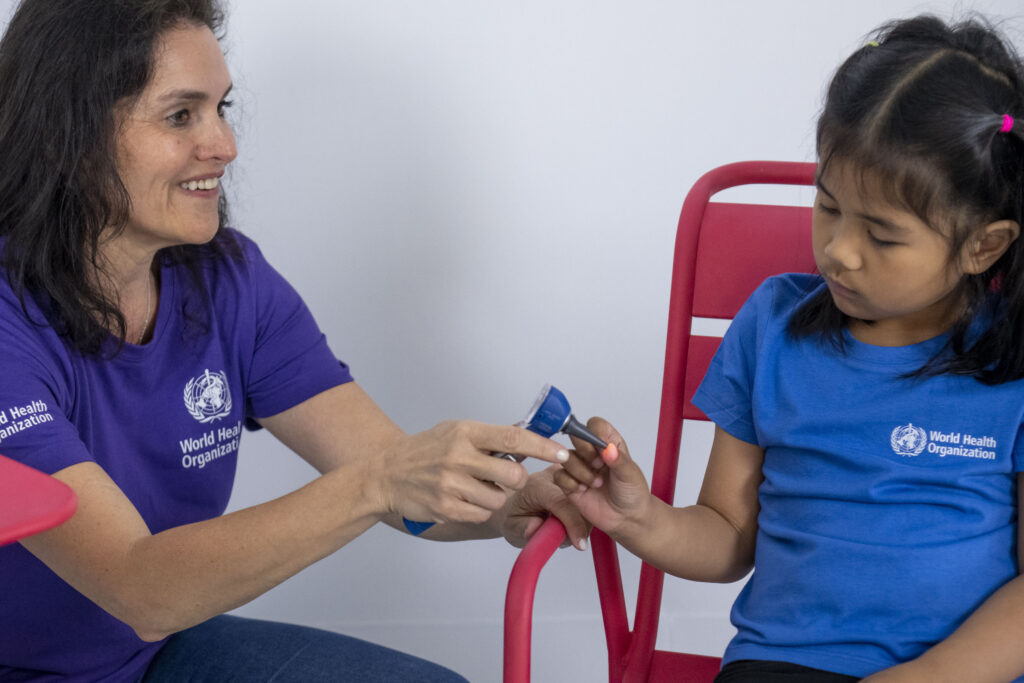The screening day
Instruction
In this topic you will learn about what needs to be organized on the screening day.
Preparing for screening
Preparing for screening includes:
- Preparing the space and equipment
- Organizing paperwork
- Planning the screening flow
- Group preparation session

Preparing the space and equipment
The screening space should be cleaned (to remove dust, dirt, and waste) and set up for screening.
The equipment should be clean and ready to use.
Organizing paperwork
Paperwork should be ready. For example:
- Children’s signed Consent forms
- Copies of blank Screen forms.

Planning the screening flow
Plan an easy flow for the children to pass through the screening process.
The screening assistant will direct the children during the screening.
Another adult (‘supervising adult’) is present for each screening. This is to confirm that the child’s personal safety is respected.
The screening assistant or supervising adult makes sure that the children who are waiting cannot see into the screening room until it is their turn to go in.

Group preparation session
Arrange a group session to prepare the children who will be screened.
Preparing the children in a group and using a ‘child-friendly’ approach will help to:
- Reduce any worries about the screening
- Reduce the time needed to prepare each child individually
- Make the screening more efficient.
The screening activities can be explained in a simple, fun and playful way.
Show the screening equipment to the children so they know what will happen during the screen.
Question
Look at this picture of a screener using a ‘child-friendly’ approach for screening.

1. What makes this approach ‘child-friendly’?
- Sitting at the child’s level
- Smiling and looking at the child
- Letting the child see the equipment.
2. What are some other ways to reassure a child in this situation?
Other things that reassure a child include:
- Using a friendly voice
- Explaining things slowly and checking that the child has understood
- Telling the child they are doing well.
At the end of the screening day
Make sure that the paperwork has been completed including:
- Register of attendance
- Screen forms (to record screening results)
- Follow up referral list (to record children needing to see eye and/or ear care personnel).
You should also clean the screening space and equipment.

Tip
If a child is absent on the day of the screening and consent has been given, screening should be arranged for another day. This should be at the school or another location.
Instruction
If you haven’t already, print the Follow up referral list. You can also find the form in the Vision and hearing screening for school-age children implementation handbook.

